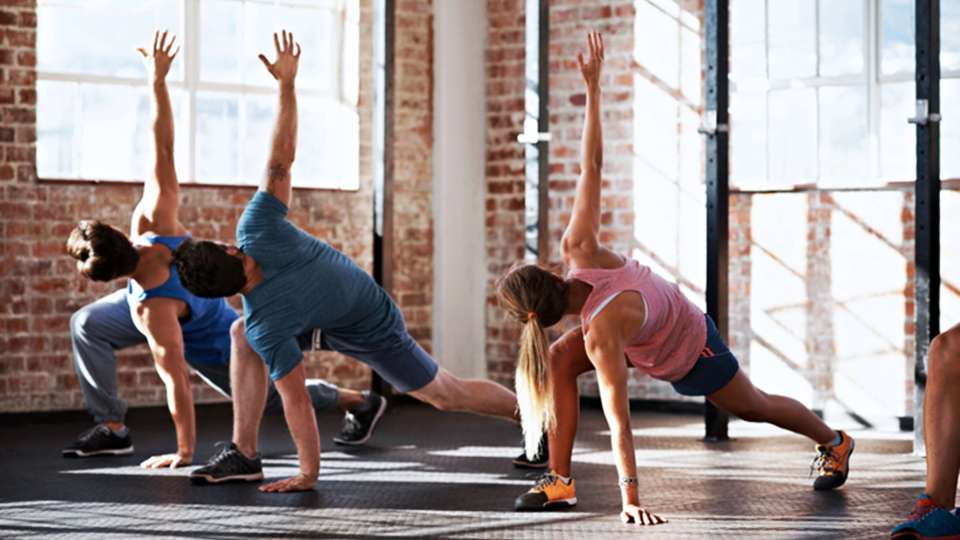
Whether you’re venturing outside in rain (most likely) or shine, or just want to stick to the comfort of your at-home gym (aka your living room, bedroom or garage), there’s one important step before you start: your warmup.
Dr. Mark Harrast, Medical Director of the Sports Medicine Center at Husky Stadium, explains how to effectively warm up for exercise, and why it’s so important to get your muscles warm before you work out.
How to warm up
While “warming up” might incite thoughts of reheating leftovers in the microwave, it also refers to getting your body ready for exercise.
According to Harrast, there are actually two parts to a complete warm up — the aerobic warm up and the stretching warm up.
“You don’t always have to do them both, but ideally you should, if you have time,” he says.
You should first spend about five to 10 minutes on the aerobic portion, which can be anything from a fast walk or light jog to jumping rope — or jumping jacks — pedaling on a bike or high knees.
Another great tip? Try doing a slower, easier version of the workout you were planning to do.
For instance, if you’re planning on going for a run, a low-intensity exercise that would properly warm you up is a slow jog. If you’re doing a strength workout such as weightlifting or Pilates, start with some jumping jacks to increase the blood flow to your muscles.
Think of your warmup activity as movement that sightly elevates your heart rate and gets you working up a light sweat (you know, that oh-so-sought-after healthy glow).
The do’s and don’ts of warm up stretching
And now for the stretching part of your warm up, which Harrast says should come after the aerobic part, and last around three to five minutes.
For this portion, he suggests choosing dynamic stretches instead of static stretches. Whereas static stretches usually consist of sitting and holding positions for periods of time, dynamic stretches are all about motion, which will get you better prepped for your workout.
His favorite dynamic stretches? “Some simple ones that I like, and think are really effective, are walking lunges and step-ups on stairs.”
If you’re going to be swimming, Harrast suggests plenty of arm circles and shoulder rolls to warm up, while intense lower body workouts would benefit from a dynamic stretch like monster walk — basically a very exaggerated form of walking sideways.
Other dynamic stretches that you can incorporate into your warmup routine include:
Hamstring. To loosen up the back of your legs, stand with your feet on the ground and hinge at your hips, slowly bending over and then standing back up. Your legs should be straight, but don’t lock your knees.
Adductor. To loosen up the inside of your legs, walk your feet out into a wide stance with your feet facing forward and slowly lunge from side to side. Your knee should not go past your toes each time you lunge.
Chest and arms. To warm up your arm and chest muscles, grasp your hands behind your back and while keeping your arms straight, slowly raise your clasped hands up and back down. If you can’t reach your hands, use a strap to connect your hands behind your back.
Do these dynamic stretches for around five minutes after you’ve completed the aerobic portion of your warm up. You don’t want to tire yourself out, but do you want to feel like you’re warming up.
The benefits of warming up before exercise
The benefits of warming up go far beyond just a healthy glow.
“By warming up and easing into activity, the muscles can respond better to the stresses of the workout,” says Harrast. “Warming up also helps increase blood flow, body temperature and heart rate, which will make the workout less shocking to your body.”
While results from studies that look at whether or not warming up reduces the risk of injury are somewhat inconclusive, the majority of evidence is in favor of warming up before exercise to decrease the risk of injury.
And with good reason: Jumping (literally) right into your workout without warming up your muscles is like trying to stretch a frozen rubber band. It’s more likely to snap or break, whereas a warm rubber band is stretchy and flexible.
“Warming up may even help with performance,” adds Harrast.
Studies show that elevating your body temperature during a warmup increases the sensitivity of nerve receptors as well as the speed of nerve impulses. It gets your whole body — mind, muscles, nerves — turned on so that you’re ready to go and give it your best during your workout.
In other words, it has benefits for both your body and your mind. Even more reason to include a warmup before your next workout.
Before starting a new exercise routine, it's a good idea to talk to your doctor — especially if you have any health conditions or are recovering from COVID-19.
Editor's Note: This article was originally published on January 11, 2021. It has been reviewed and updated with new info. Rose Hoonan and Heather Logue contributed to this article.

 Healthy ideas for your inbox
Healthy ideas for your inbox





